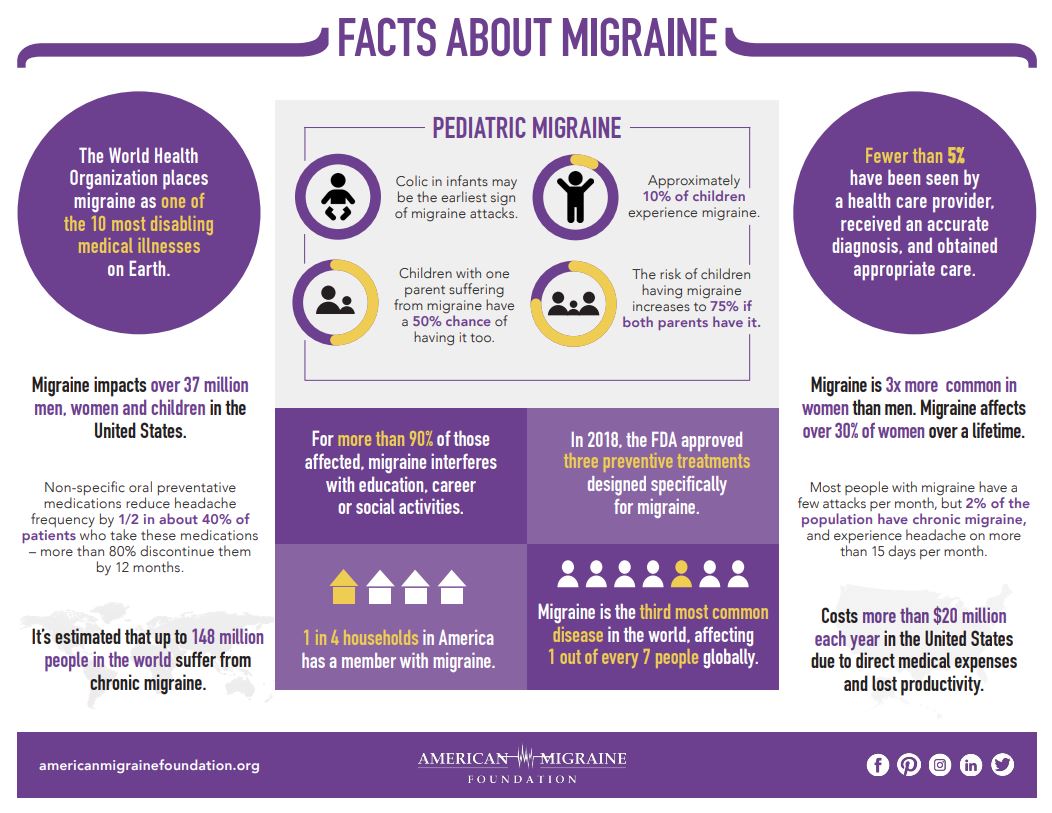June is Migraine and Headache Awareness Month
Headache disorders are some of “the most common disorders of the nervous system.” (WHO)
Everyone has a headache now and then, but not everyone with a headache has a headache disorder such as chronic migraine or cluster headaches. The WHO also states that 1 in 7 adults worldwide has migraine, and that it can be 3 times more common in women than men.
Addressing the Stigma
June is National Migraine & Headache Awareness Month (#MHAM), and the full headache, migraine and cluster communities are working together for our diseases to be recognized. A disease awareness month plays a vital role in raising public knowledge, addressing stigma and building a stronger community of patient advocates.
Headaches and migraines are among the most common disorders of the human nervous system. It has been estimated that more than half of the adult population has had at least one headache in the last year. Symptoms range from excruciating migraines, dull and throbbing head pain, piercing cluster pain, neck pain and tension, nausea, and hypersensitivity to light, sound and smells.
When left unresolved, headaches and migraines can lead to depression and isolation and self-medication.
When To See a Doctor
Occasional headaches are common, and usually require no medical attention. However, consult your doctor if:
You usually have two or more headaches a week
You take a pain reliever for your headaches most days
Your headaches are disabling
You need more than the recommended dose of over-the-counter pain remedies to relieve your headaches
Your headache pattern changes or your headaches worsen
Seek prompt medical care if your headache:
Is sudden and severe
Gets worse despite rest and pain medication
Follows a head injury
Accompanies a fever, stiff neck, confusion, seizure, double vision, weakness, numbness or difficulty speaking
American Migraine Foundation Shares Key Insights About the Reality of Migraine
Image via American Migraine Foundation


